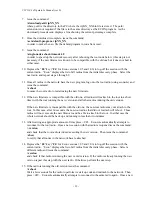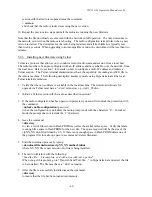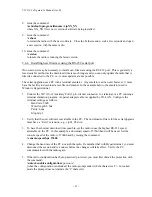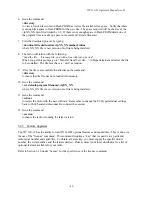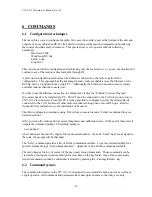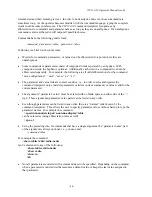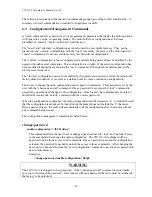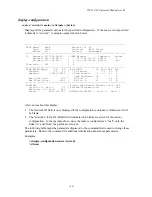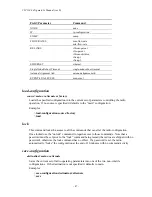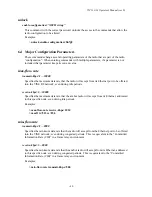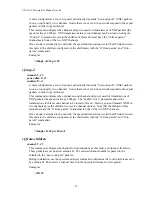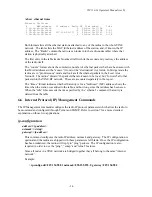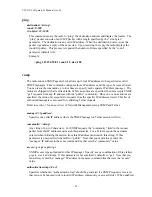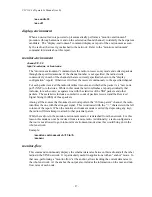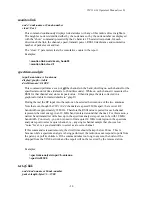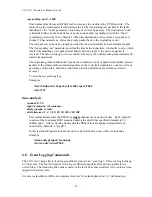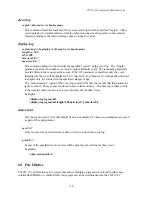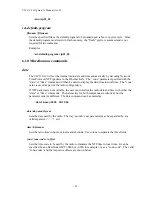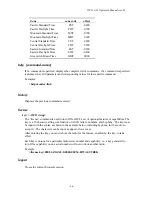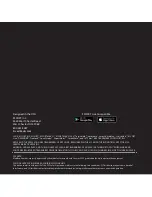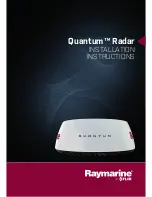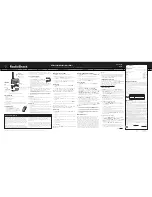
VIP 110-24
Operator’s Manual (rev E)
- 51 -
A node configured as a root or repeater periodically transmits “new node poll” (NNP) packets
in one, or optionally two, channels. Nodes that are not yet in the network respond to these poll
packets in order to get attached.
This command configures the channel and power used for transmissions of NNP packets (the
speed is always 2 Mbps). NNP transmissions in a second channel can be turned on using the
“rf-nnp-2” command. Note that the children of this radio must have the “rf-from-parent”
channel match one of the two NNP channels.
Once a node is attached to the network, the speed and transmit power for the RF links between
this node to the child are configured, at the child radio, with the “rf-from-parent” and “rf-to-
parent” commands.
Examples:
> rfnnp1 ch=15 po=18
rf-nnp-2
channel=5..35
power-dbm=0..23
enabled=0
or
1
A node configured as a root or repeater periodically transmits “new node poll” (NNP) packets
in one, or optionally two, channels. Nodes that are not yet in the network respond to these poll
packets in order to get attached.
This command configures the optional second channel and power used for transmissions of
NNP packets (the speed is always 2 Mbps). The “enable=0 or 1” parameter allows the
transmissions in this second channel to be turned off or on. Having a parent transmit NNPs in
two channels gives the children two receive channel choices. Note that the children of this
radio must have the “rf-from-parent” channel match one of the two NNP channels.
Once a node is attached to the network, the speed and transmit power for the RF links between
this node to the child are configured, at the child radio, with the “rf-from-parent” and “rf-to-
parent” commands.
Examples:
> rfnnp2 ch=35 po=18 en=1
rf-from-children
channel=5..35
This command configures the channel for transmissions by this radio’s children to this radio.
These packets are received on antenna B. The selected channel number is passed to the
children in the “new-node-poll” packets.
During installation, use the spectrum analysis command to determine the local interference seen
by antenna B. Then select a channel based on the noise/interference levels reported.
Examples:
>
rffc 15
Summary of Contents for VIP 110-24
Page 2: ......
Page 5: ...VIP 110 24 Operator s Manual rev E iv...
Page 37: ...VIP 110 24 Operator s Manual rev E 30...
Page 73: ...VIP 110 24 Operator s Manual rev E 66...
Page 89: ...VIP 110 24 Operator s Manual rev E 82...
Page 91: ...VIP 110 24 Operator s Manual rev E 84...



